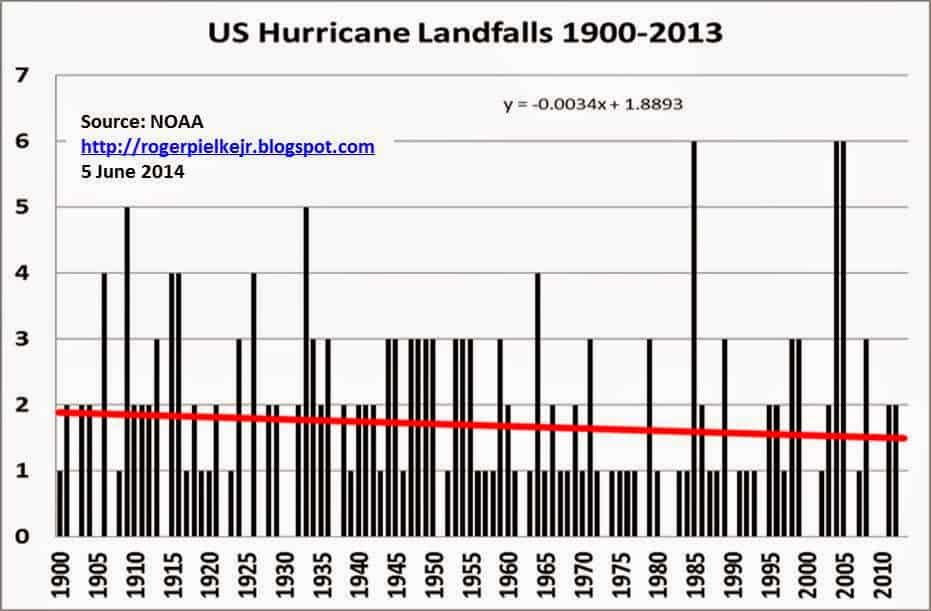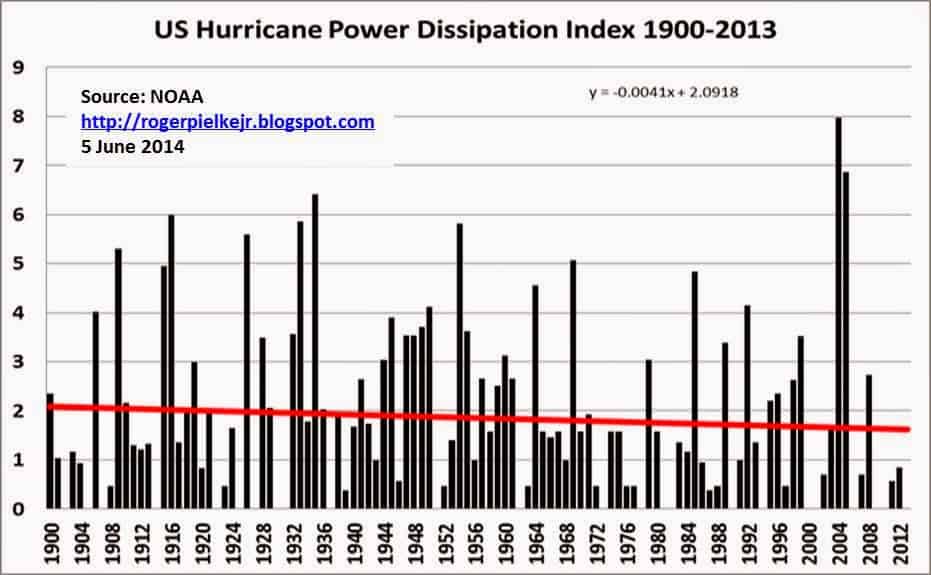Has Global Warming Increased U.S. Hurricane Damages?

Estrada et al. (2015), a study published this week in Nature Geoscience, finds “an upward trend in [hurricane-inflicted U.S.] economic losses between 1900 and 2005 that cannot be explained” by changes in societal factors such as increases in wealth, population, and inflation. The researchers also find “an upward trend in both the number and intensity of hurricanes in the North Atlantic basin” that is “consistent with” the global rise in average surface air temperature. They estimate that, in 2005, $2 billion to $4 billion in annual losses “could be attributable to climate change.”
University of Colorado prof. Roger Pielke, Jr. finds the study wrong on all counts.
Pielke provides a graph of North Atlantic hurricane strength, using a metric called the Power Dissipation Index (PDI), from 1950 through 2014. The graph covers the entire basin, not just hurricanes making landfall. Although there is considerable inter-annual and decadal variability, there is no long-term trend in hurricane strength.
More critically, Estrada et al. end their dataset in 2005, a big year for PDI and damages from Hurricanes Katrina and Rita. Thus, the researchers leave out of the dataset the record-breaking nine-year (2006-2014) “drought” of major (category 3, 4, 5) U.S. hurricane landfalls.
In other graphs, Pielke shows that U.S. hurricane landfall frequency and intensity have both declined 20% from 1900 to the present.


Comparing two fifty-year periods, Pielke notes that there were 23 major U.S. hurricane landfalls during 1915-1954 but only nine major hurricane landfalls during 1965-2015. There were 40% fewer major U.S. hurricane landfalls in the later, globally-warmer 50-year period.
